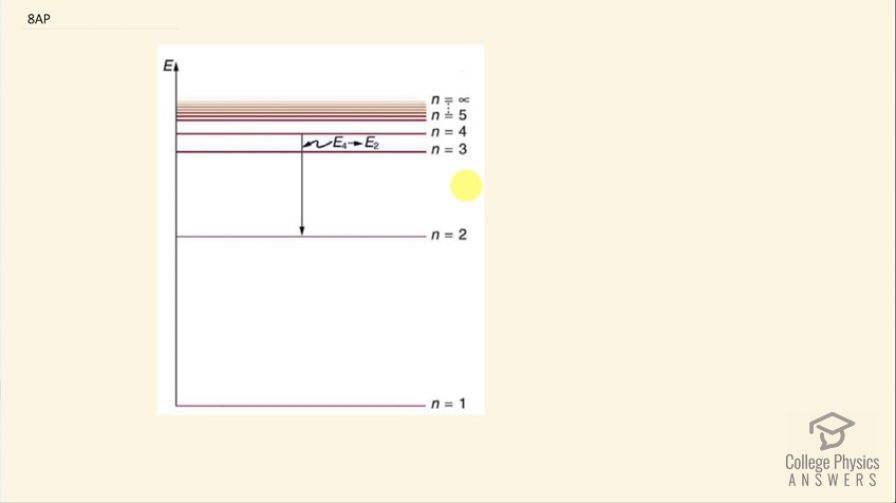Question
A rock is illuminated with high energy ultraviolet light. This causes the rock to emit visible light. Explain what is happening in the atomic substructure of the rock that causes this effect, which we call fluorescence.
Final Answer
Please see the solution video.
Solution video
OpenStax College Physics for AP® Courses, Chapter 30, Problem 8 (Test Prep for AP® Courses)

vote with a rating of
votes with an average rating of
.
Video Transcript
This is College Physics Answers with Shaun Dychko. A rock is illuminated with high energy ultraviolet light and this causes the rock to emit visible light and the question is what's happening in the atomic substructure? So suppose an electron is in the ground state initially and then it's hit by a high energy ultraviolet photon and it might make it go all the way up to suppose n equals 5 level, what happens next is that the electron might make a transition back down to the ground state in steps so it might go from 5 down to 3 and then from 3 to 2 and then from 2 to 1 and the total energy of each of these transitions has to equal the initial energy that was provided by the ultraviolet photon but that means each one of these steps will be less energy than the ultraviolet photon and it's possible that one of these steps might emit a photon with an energy such that it is a visible photon and this is the fluorescence effect.